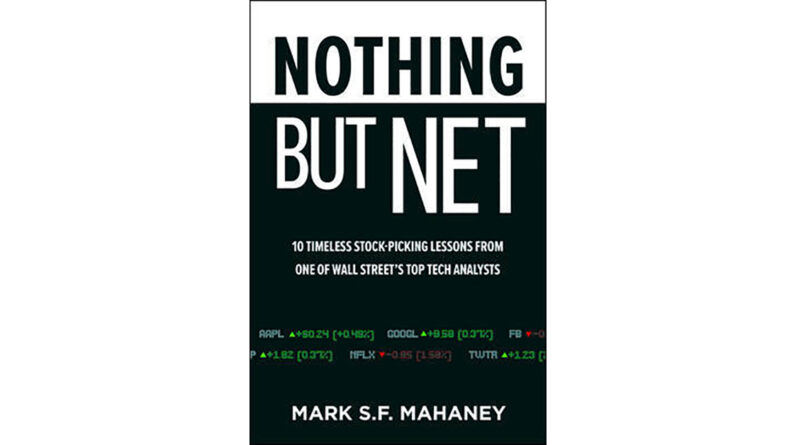
Nothing but Net: 10 Timeless Stock-Picking Lessons from One of Wall Street’s Top Tech Analysts. 2021. Mark S. F. Mahaney. McGraw Hill.
In Nothing but Net, the well-known US technology analyst Mark Mahaney has encapsulated his life’s work in 300-plus pages. The book provides 10 invaluable lessons that investors can use to pick tech stocks in years to come. These lessons are imparted through case studies on companies, which makes the book fun to read.
The book offers an informative history of some prominent tech stocks that thrived and others that failed. It covers Amazon, Facebook, Google, Netflix, and Uber in detail, exploring their product innovation, customer centricity, revenue growth, and management strength. The narrative also examines such companies as Yahoo, eBay, Priceline, Spotify, Blue Apron, Zulily, Groupon, and Snap to derive intriguing insights.
Mahaney demonstrates analytical rigor as he lays out his key points in a structured manner. For instance, he provides three action questions to deal with high valuations of internet companies, four logical tests to gauge companies’ profitability potential, and several key characteristics by which to evaluate management quality.
The author draws on his 23 years of research experience to supply concrete guiding principles to be followed before investing in a tech stock. Companies that are customer centric rather than investor centric, he says, win in the long term. Analysts should examine a minimum of three to five years of public markets experience before drawing conclusions on the quality of management. Mahaney also advises readers to use a company’s app before making an investment decision.
At several points in the book, the author offers individual investors substitutes for information sources to which only institutional investors have access. The one that stands out for me is using a Netflix subscription as a proxy for an extensive consumer survey available to institutions. Obtaining a subscription enables an individual to judge quality of content and ease of use.
Certain terms that Mahaney uses, such as DHQs (dislocated high-quality stocks), DAM (direct addressable market), and step-fixed costs, will be etched in the mind forever. More importantly, he has managed to answer several questions that trouble investors about new age businesses:
- How does one identify positive and negative turning points for companies?
- What metrics should be monitored on a regular basis?
- Is profitability important for high-growth tech companies?
- When should these stocks be sold?
There are a few other topics I would have liked to see covered in the book. First is the way that markets expanded tech companies’ multiples as interest rates slid. (More pertinent at present is what happens to the multiples when interest rates go up.) Second is the role of exchange-traded funds (ETFs) in bringing dedicated flows to these stocks and whether that has had an impact on valuations. Third is the experience curves of international stocks, especially in Europe and Asia. Fourth is the ways that US tech companies have adapted to the environment outside the United States and why some failed. Finally, is it important for tech companies to choose investors on their cap table wisely? This question arises because the path to positive free cash flow is long, so subsequent funding will be required.
Nothing but Net describes the experiences of technology stocks through the author’s US lens, but the powerful methodologies the author provides are valid for new age businesses around the world. Experience curves of tech stocks elsewhere may prove similar to those that played out in the United States. By the same token, market participants who are already familiar with US internet stocks through years of monitoring them may enjoy Mahaney’s narration and draw some valuable lessons for their analysis. As the number and power of technology companies grow both within and outside the United States, this book deserves a place on investors’ book shelves for years to come.
If you liked this post, don’t forget to subscribe to the Enterprising Investor.
All posts are the opinion of the author. As such, they should not be construed as investment advice, nor do the opinions expressed necessarily reflect the views of CFA Institute or the author’s employer.
Image courtesy of Paul McCaffrey
Professional Learning for CFA Institute Members
CFA Institute members are empowered to self-determine and self-report professional learning (PL) credits earned, including content on Enterprising Investor. Members can record credits easily using their online PL tracker.








